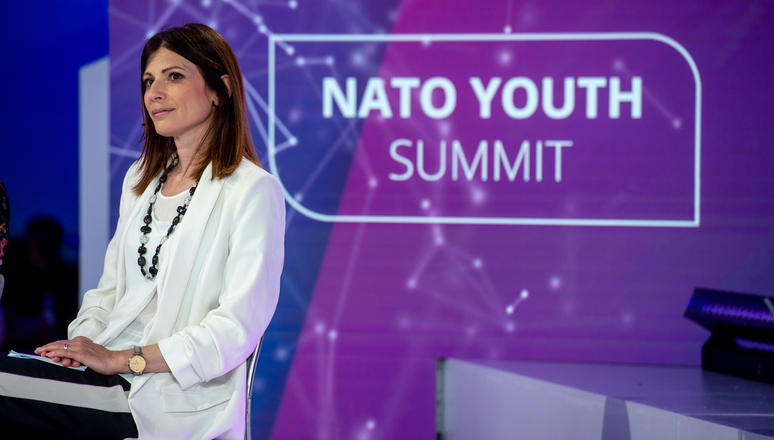Today’s generation of youth is the largest the world has ever known, and young women and men are often forming the majority of the population in countries affected by violence and armed conflicts. Their input in security is therefore essential.

The Youth, Peace and Security (YPS) Agenda established by the United Nations Security Council Resolution (UNSCR) 2250 (2015) and subsequent resolutions UNSCR 2419 (2018) and UNSCR 2535 (2020), recognises the inclusion and participation of young people as a key dimension of building and sustaining peace and security for all. The resolution identifies five pillars for action:

Take youth’s participation and views into account in decision-making processes, from negotiation and prevention of violence to peace agreements.

Ensure the protection of young civilians’ lives and human rights and investigate and prosecute those responsible for crimes perpetrated against them.

Support young people in preventing violence and in promoting a culture of tolerance and intercultural dialogue.

Engage young people during and after conflict when developing peacebuilding strategies along with community actors and United Nations bodies.

Invest in youth affected by armed conflict through employment opportunities, inclusive labour policies, and education promoting a culture of peace.
As indicated in: Global Coalition on Youth, Peace, and Security (2022) “Implementing the Youth, Peace and Security Agenda at Country-level: A Guide for Public Officials”.
Through the meaningful integration of young people in peace efforts, institutions will recognise their contributions in the present and in the future. Young people carry out important peacebuilding work, including reaching out to peers, working at the community level, maintaining dialogue, and bridging divides in polarised contexts. When youth are given the opportunity to participate in peace processes, they acquire civic skills, and often make lifelong commitments to peace. Therefore, it is also an investment in the future.
NATO’s work with youth
NATO engages with young people on several different levels and through different approaches. The Alliance can benefit and learn from fresh perspectives, and at the same time give young people opportunities to get involved and make themselves heard.
NATO’s Science for Peace and Security Programme, for instance, is developing more and more projects that offer opportunities and stipends to support and involve young scientists in the early stages of their careers.
Furthermore, as part of the NATO 2030 initiative, NATO has engaged with young leaders to gain their input on how to further strengthen the Alliance to meet the emerging security challenges of the coming decade. The NATO 2030 Young Leaders Group, which was announced at the NATO 2030 Youth Summit, consisted of 14 emerging leaders from across the Alliance that were selected from prominent young leadership programmes. They represent diverse professional fields, from researchers to space engineers and diplomats. On 4 February 2021, the NATO 2030 Young Leaders submitted a report to NATO Secretary General Jens Stoltenberg with advice on how to make NATO an even stronger Alliance.
Another major project is the annual NATO Youth Summit. The most recent NATO Youth Summit took place on 28 April 2022. It was entitled “Securing Our Shared Future“, and was organised in cooperation with the Center for European Policy Analysis (CEPA). The Youth Summit’s panel discussions covered pressing security challenges including climate change, disinformation, humanitarian crises, emerging technologies and gender discrimination.
These are just a few examples, but there are many more ways in which NATO interacts with young people and encourages their participation in all aspects of defence, peace and security.
The future is female (and young)
So how do the Women, Peace and Security (WPS) Agenda and YPS fit together? The WPS and the YPS agendas are interlinked and complementary: both agendas advocate for groups that have historically been excluded from decision-making processes. The contributions of both groups build on experiences and knowledge that go far beyond traditional conflict environments, but also include various forms of exclusion and discrimination, organised crime, and sexual and gender-based violence. These different forms of violence are highly gendered, with young women being particularly vulnerable to experiencing domestic violence, sexual assault, abduction, trafficking, torture and forced labour, and other forms of violence.
“A more secure future is a gender equitable one as where women are more empowered, countries are less likely to go to war with their neighbours or to be rife with crime and violence within their society.”
– Mr. Axel Martin-Aronsson, Norway, CSAP Member 2019 – 2022
However, recognising the complementarity between the WPS and YPS agendas does not lump the two groups of women and youth together. This would deny the specific needs and challenges of each of these groups. Instead, policymakers and practitioners must take an intersectional approach that ensures that all policies, programs, and initiatives fully capture age- and gender-based power dynamics.
